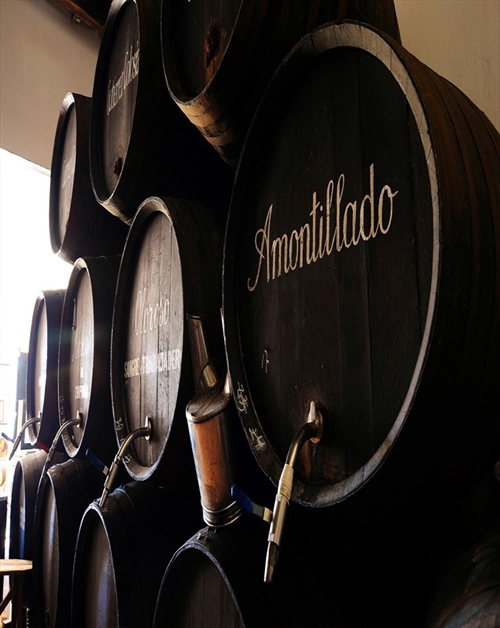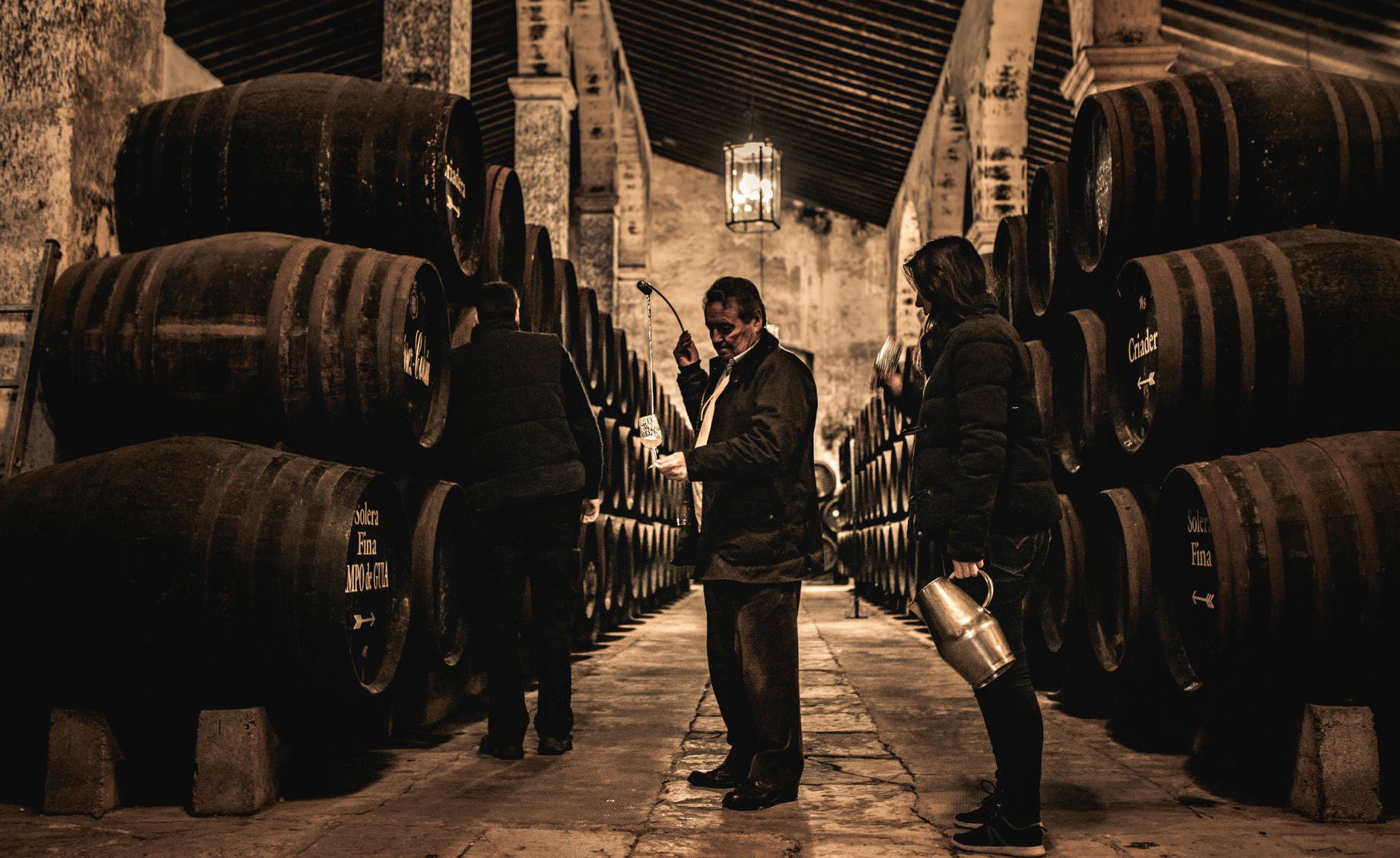
Many people might think that sherry casks used to mature whisky have done the same job with sherry in the past, meaning that they have been used to mature sherry. However, this is rarely the truth. The vast majority of casks are what is known in Scotland as "seasoned" with sherry, and the casks are not a direct result of sherry production. In practice, this means that the casks have simply been filled (seasoned) with sherry for a shorter or longer period of time, either in Scotland or in Spain.
To fully understand these casks and the sherry cask matured whisky in your glass, you need to understand the wine that has previously matured in the cask, whether it's the seasoned process or sherry that has been aged in the casks. The quality and style of the wine is crucial to the finished whisky, and the characteristics and aromas the ageing process adds to the whisky. Similarly, there will be a difference if the cask is made from European or American oak, and finally, whether the whisky has spent a shorter or longer time in the cask containing sherry.
Where does the tradition come from?The tradition of using sherry casks to age Scotch whisky is directly linked to the British love of the fortified wine from southwest Spain. In the past, sherry was shipped in casks and then bottled in the country where the sherry was to be sold. The empty casks were of little value to importers and there was no way to send them back to Spain for recycling. Instead, they were sent up to the recycling-loving Scots, who at the time refilled pretty much anything that didn't leak. These casks were called "transport casks", and they were typically built from Spanish oak rather than the more expensive American oak, which was imported and used exclusively for the sherry storage systems.
Throughout the latter half of the 19th century, the supply of used transport sherry casks
was good, and the Scotch whisky industry embraced them, and the whisky was influenced by the casks. Not all love lasts forever, and neither did the British love of sherry. Casks from the sherry region became rarer and as the Spanish Civil War raged in the 1930s, supplies became scarce. Curiously, this coincided with the new American legislation of 1938, where it was decided that Bourbon whiskey could only be put into brand new casks. This created a huge surplus of American casks, and the Scots replaced sherry casks with used bourbon casks in a big way. However, there were still distilleries that sourced a certain proportion of sherry casks and maintained the tradition. One of these was GlenDronach, which has become world famous for sherry cask aged whisky. In 1986, however, the Spanish decided that sherry should be bottled in Spain and could only be exported in bottles. This naturally led to a severe shortage of sherry casks for the industry.
The shortage of sherry casks led more and more producers to start using 'paxarette', a very sweet Spanish wine typically made from sun-dried Pedro Ximinez grapes with a boiled-down essence added. This product could then be used to 'refresh' tired and stale sherry casks by pouring the liquid into the casks under pressure so that it soaked into the staves. Fortunately, the Scotch Whisky Association took action in 1989 and banned this practice.
To secure the supply of sherry casks, more producers began working directly with sherry producers, and this now included the 'seasoned' method, where fresh casks of both American and European oak were filled with young sherry for varying lengths of time and then sent to producers in Scotland as sherry casks. The method has been refined over the years, and some refilling now also takes place in Scotland after new casks have been transferred or if you want to refresh casks that have been used in the past. In addition, several different sherry grades are now being used, which have a different impact on the final product. Sherry is not just sherry. See the box below for more information about the amazing fortified wine the different types of sherry.
The different types of sherry FINO - A light and golden wine with a fresh, crisp fruity and almond flavor.
MANZANILLA - A wine with a light and straw yellow color. It is dry, crisp and has a note of almond flavor.
AMONTILLADO - Amber-golden color, nutty flavor. Can be full-bodied and dry or with a hint of sweetness.
OLOROSO - A mahogany colored wine with a powerful walnut aroma and flavor. Can be very dry or with a hint of sweetness.
PALO CORTADO - A different and amber-colored wine with the scent of Amontillado and the taste of Oloroso.
CREAM - Often Fino Sherry with the addition of e.g. Pedro Ximénez. A light sherry with a floral flavor and a rounded, sweet aftertaste.
PEDRO XIMÉNEZ - A very concentrated and sweet wine produced from the grape of the same name, the wine has an aroma and taste of raisins, spices and licorice.
MOSCATEL - A concentrated and sweet wine produced from the grape of the same name. It smells and tastes of nutmeg.
 What is Sherry?
What is Sherry?Sherry is produced in Southwest Spain in the region of Andalusia. It is the southernmost wine region on the European continent and the oldest wine region in Spain.
A diversity of winesSherry is not just Sherry, but a wide range of different types of white wine. From the light golden, almost greenish to the dark brown, almost black. From the very dry to the very sweet, and from the very fresh and fruity to the full-bodied and nutty to the creamy, raisiny and spicy.
The different qualitiesSherry is produced from three grape varieties that grow in the region's white and chalky soil. Palomino Fino is by far the most important and is used for virtually all sherry types except the sweet dessert sherry variants. Palomino Fino makes up around 95% of all grapes grown for sherry production. The other two varieties used for the sweet dessert sherry types are Pedro Ximénez (commonly abbreviated P.X.) and Moscatel.
Solera systemThe whole secret of sherry is the aging process, and to a lesser extent the quality of the grapes or specific growing area. Sherry is aged in "criaderas y solera", also known as the solera system. It is a dynamic aging method based on blends of different vintages, with different aging systems for each of the different styles. It guarantees consistent quality in the wines year after year.
The
region and climateThe grapes for the production of sherry are grown in the so-called sherry triangle. The corners are formed by the three cities of Jerez, Sanlucår de Barrameda and El Puerto di Santa Maria. However, the Pedro Ximéz grape can be imported from the neighboring region of Montilla-Morilles.
The Sherry Triangle is a very hot area. There are around 300 days of sunshine per year and temperatures can reach around 40 degrees in the summer. The annual rainfall is 625 mm, which is roughly equivalent to Danish conditions, but it is very unevenly distributed throughout the year with the majority in winter. The vines survive the dry summer period as the soil can hold up to 25% water. This water retention occurs via the lime in the soil, with the best soil type - Albariza - containing up to 80% lime. Albariza comes from "alba", which in Latin means white. Thus, there is a lot of white soil, which provides a beautiful contrast to the green vines.
Vintage sherryUntil the second half of the 18th century, sherry was sold by vintage. It is possible to find single vintage sherry where a producer has found a single barrel that is truly special. Otherwise, the wine of the year matures in the solera system.